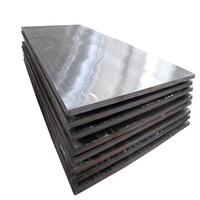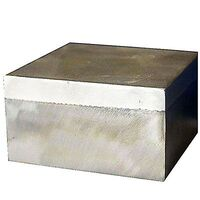1. Introduction
Just 24 hours ago, architects at the Venice Biennale unveiled a striking pavilion wrapped entirely in a titanium-clad facade—a bold statement on the future of sustainable, high-performance building skins. This moment underscores a growing global trend: the rise of metal clad systems in modern design. But what exactly does ‘metal clad’ mean, and how do different types stack up?

In simple terms, metal clad (or metalclad) refers to composite materials where a base metal is bonded with a layer of another metal to enhance properties like corrosion resistance, strength, or visual appeal. From metal clad siding on homes to clad steel used in industrial piping, these hybrids are reshaping construction.
2. Understanding Clad Metal Meaning and Manufacturing
2.1. What Does ‘Metal Clad Meaning’ Really Encompass?
The term ‘clad metal meaning’ describes any layered metal structure where two or more metals are metallurgically bonded. Unlike coatings that sit on the surface (like paint or plating), cladding integrates the layers into a single functional unit. This process preserves the core’s structural integrity while adding surface benefits.
Common examples include aluminum clad stainless steel—where stainless provides corrosion resistance and aluminum adds lightness—and stainless clad aluminum, often used in heat exchangers for its thermal efficiency.
2.2. How Are Clad Metals Made?
Two primary methods dominate: roll bonding and explosive bonding. Roll bonding involves pressing heated metal sheets together under high pressure, ideal for flat products like aluminum clad sheet or stainless steel plate. Explosive bonding uses controlled detonations to fuse dissimilar metals—useful for titanium clad or Inconel weld overlay applications.

Electroplating also plays a role, especially for thinner surface enhancements like chromium electroplating on brass plates for engraving or nickel sulfamate deposits on aerospace components. However, true ‘clad’ implies a thicker, structural bond—not just a micron-level coating.
3. Comparing Popular Metal Clad Types in Architecture
3.1. Corten Steel Facade vs. Zinc Clad Roof
Corten steel siding has surged in popularity due to its self-weathering rust patina, eliminating the need for painting. A corten steel facade offers dramatic texture and low maintenance, though initial corten siding cost can be high—often $8–$12 per square foot installed.
In contrast, a zinc clad roof or zinc metal siding provides a sleek, modern look with exceptional longevity (80+ years). Zinc naturally forms a protective carbonate layer, resisting corrosion without rusting. While more expensive upfront than corrugated steel facade options, it’s prized for sustainability and recyclability.
3.2. Copper Siding and Aluminum Clad Systems

Copper siding ages gracefully into a green patina, making it a favorite for heritage-inspired metal clad houses. It’s soft and malleable but costly. Meanwhile, aluminum clad steel—used in everything from standing seam siding to pac clad column covers—offers strength with light weight.
Colorbond standing seam and pac clad hwp systems leverage pre-painted aluminum-coated steel for vibrant, fade-resistant exteriors. These are common in metal clad buildings across Australia and North America, combining durability with design flexibility.
3.3. Specialty Applications: From Electrical to Insulation
Not all metal clad is architectural. Metal clad electrical wire (like aluminum clad steel wire or cu clad wire) uses a steel core for tensile strength with a conductive outer layer. Similarly, aluminum clad pipe insulation wraps pipes in reflective metal to reduce heat loss.
Even metal clad wire finds use in electronics, where alloy clad variants like 7075 T6 clad aluminum improve fatigue resistance in aerospace frames.
4. Performance, Cost, and Selection Factors
When choosing a metal clad type, consider environment, budget, and function. For coastal areas, stainless steel metal plate or 316 stainless steel plate resists salt corrosion better than mild steel plate. In industrial settings, chrome carbide overlay plates handle abrasion in mining equipment.
For residential projects like a steel clad house or metal clad shed, exterior corrugated metal siding offers affordability and quick installation. Vertical standing seam metal siding delivers a cleaner aesthetic, often seen in pac clad coping details.
Cost varies widely: corten steel plate may run $3–$5/lb, while titanium plate exceeds $30/lb. Aluminum diamond tread plate or checker plate metal sheet provides slip resistance for platforms at moderate prices.
5. Conclusion
Metal clad isn’t just a buzzword—it’s a versatile engineering solution blending form and function. Whether you’re specifying a corten steel facade for its raw beauty, selecting zinc clad dormer elements for longevity, or using clad steel in infrastructure, understanding the nuances between clad metal types ensures smarter, more sustainable builds. As materials science advances, expect even more innovative alloy clad combinations—like copper nickel clad or Inconel 625 overlay—to enter mainstream use.
Our Website founded on October 17, 2012, is a high-tech enterprise committed to the research and development, production, processing, sales and technical services of ceramic relative materials such as What. Our products includes but not limited to Boron Carbide Ceramic Products, Boron Nitride Ceramic Products, Silicon Carbide Ceramic Products, Silicon Nitride Ceramic Products, Zirconium Dioxide Ceramic Products, etc. If you are interested, please feel free to contact us.
